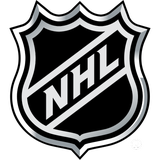
Strategy behind fighting after clean hit
In a recent interview with the Chicago Sun-Times, Blackhawks left winger Troy Brouwer talked about fighting Columbus Blue Jackets defenseman Marc Methot after Methot had thrown a clean hit on Chicago star Patrick Kane. Columbus’ R.J. Umberger had also wiped out Brent Seabrook in the contest.
“After every hit, I don’t know,” Brouwer said. “If it’s a clean hit, depending on who the player is, it’s tough to say. But you do have to protect your star players and make sure that type of play won’t be tolerated.”
The concept of fighting after clean hits — particularly big ones — has become an aggravation for some pundits in the past year or so. And while players will undoubtedly chalk the practice up to protecting teammates, reppin’ their team colors and so on, I think there might actually be a solid strategy to this phenomenon.
Think about it: If players knows they’ll have to answer the bell when they hit Kane, some of them might pull back to a stick-check instead of laying the body. That gives the elusive Kane more room to operate and more time to make goalies look silly.
If that leads to more Chicago wins, it’s better for the Blackhawks. And in a season when the Hawks are life-and-death to make the playoffs, every game from here on out does indeed matter.
Now, I accept there may be some discomfort with this philosophy. Hitting is a part of hockey and we all love to see big bodychecks. Heck, hip checks are becoming so rare that when they do happen, it’s instant YouTube fodder. And, ironically, there was no fight immediately after that monster hit.
But this doesn’t mean the end of hitting at all. Is there a way to counteract a team who engages you after every hit on a star player or even a big hit on a foot soldier? Sure there is. The first is to fight, much like Methot did willingly when Brouwer asked him if he wanted to go. If you don’t back down, the battle of wills is on and the aggressors can’t bully you into giving their stars more room to maneuver.
Secondly, you can hit away and then not fight — no doubt drawing numerous instigator penalties and misconducts for your angry opponent. You may say this violates ‘The Code’ in hockey, but are you in the NHL to win or not?
Protecting teammates as an aggressive strategy doesn’t even necessarily mean diminishing the skill level on a team, either. Brouwer is on pace to surpass the 20-goal mark for the second straight season and took on Methot in a game that Chicago didn’t dress heavyweight John Scott.
Of course, the day-to-day effectiveness of this strategy may be limited to the regular season, since fighting tends to simmer down in the playoffs. Players still like to set tones and settle scores, but are so much more careful about taking themselves off the ice for five minutes or, even worse, giving the other team a power play. But, again, if you’re scrambling to get in the postseason, your team should be willing to do whatever it takes to make that round of 16. It’s a battle of wills and blood is usually spilled along the way.
Ryan Kennedy is a writer and copy editor for The Hockey News magazine, the co-author of the book Hockey's Young Guns and a regular contributor to THN.com. His blog appears Fridays, The Hot List appears Tuesdays and Rookie Report appears every other Wednesday.
For more great profiles, news and views from the world of hockey, subscribe to The Hockey News magazine.

